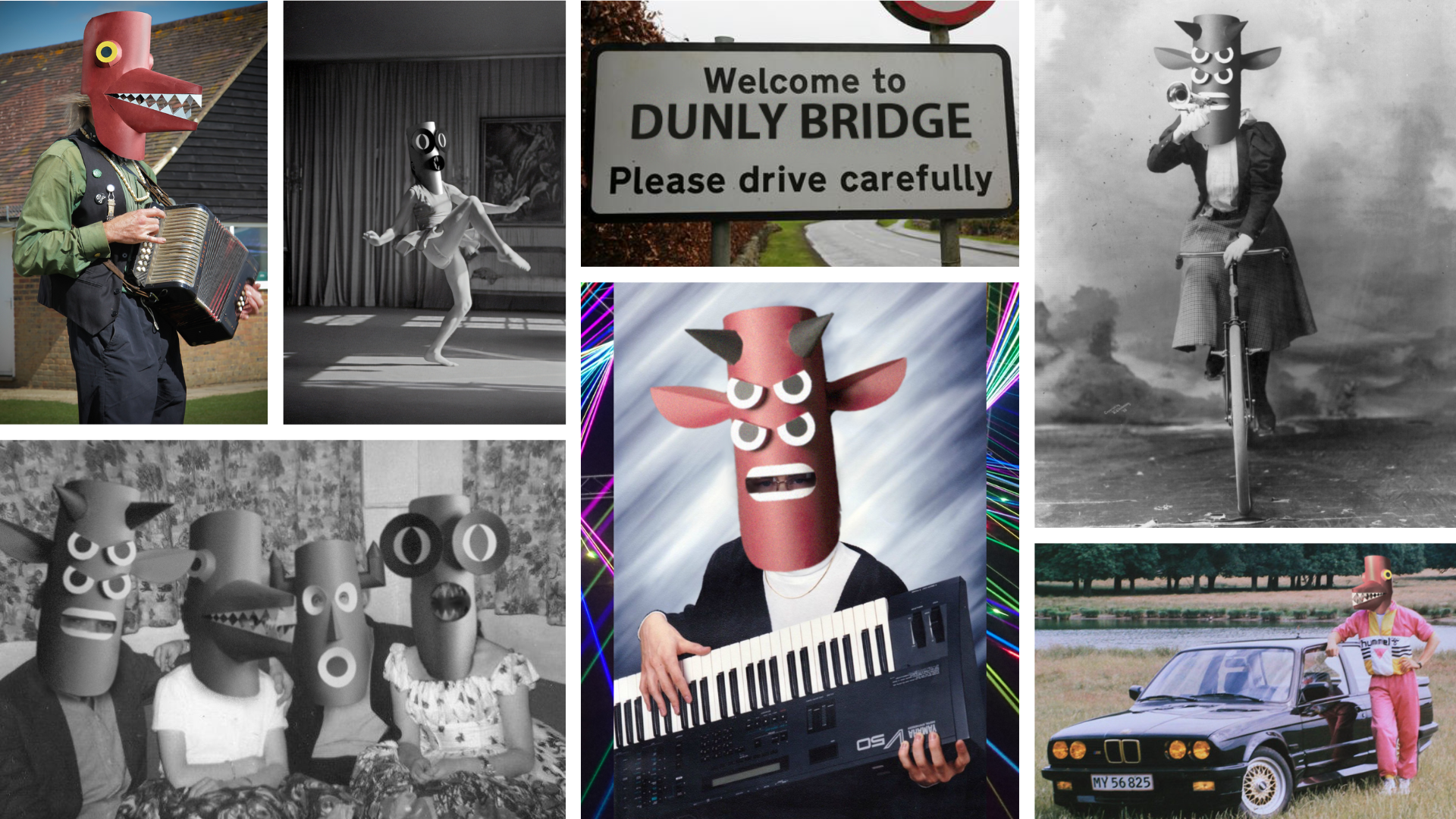The Devil of Dunly Bridge
Long red masks, torches, chains and dances by the fire - this is what one might see if they were to visit the rural riverside town of Dunly on All Hallows Eve. Many have heard the tales, but those who've claimed to have witnessed these strange customs, are dismissed as attention seekers, fibbers or madmen. Each autumn, access to the town is cut off, and on October 31st, the residents of Dunly Bridge celebrate the unusual tradition of the Long Face Festival. According to the tradition, those caught without a costume after sunset are put in shackles and caged until the first rays of sun fall on Dunly Bridge on the morning of November 1st. The history of the Long Face Festival dates back over 400 years and is believed to have originated alongside the story of the Devil of Dunly, which is recounted below.

The devil and the Ferryman
The town of Dunly, formed on the banks of the river Faran, has been an important through-point from its earliest days as a ferry crossing, to the building of the infamous Dunly Bridge. The town prospered as a ferry crossing and the position of ferryman at Dunly was prestigious. It was the ferryman who ultimately controlled who, when and how much was paid to cross the river.
The story goes that during a crossing, the Devil, disguised as wealthy gentleman, struck up a conversation with the Ferryman. The man complained about having to cross the river by boat and boasted of how his family had built the first wooden bridge across the Faran at Knapperton. He himself was in fact returning home to Dunly with enough money to build his own stone bridge and he proudly showed the ferryman the drawings which he had prepared to present to the mayor. The Ferryman, angered, insulted, and fearful of losing his position, cut the man’s throat and took his money before sinking his body in to the river.
The following day, the Ferryman presented the plans for a new stone toll bridge to the Mayor of Dunly who was so impressed that he granted permission for the work to begin work immediately. The Ferryman hired masons from all over the county who worked without rest to complete the bridge before Winter, setting the final stone on last day of October.
As the sun set on the new bridge, it is said that the Devil marched forth from under the arches leading a horde of demons and claimed the town as his own. The townsfolk were captured. Those who fought were devoured, those who didn’t were thrown into cages and the Devil danced until sunrise. As the first rays of light struck the bridge, the Devil left carrying the Ferryman’s head and gave the town to the Demons, vowing to return each year to check that all was as it should be.
On the fifth day of November, the people of Dunly rose-up, overthrowing the Demons and drowning them one by one in the river. The town celebrated their victory by enjoying a long and peaceful Summer, but with each day that past, the eve of the Devil’s return drew nearer.
While most people did what they could to put the horrifying events behind them and not think about those to come, the town’s children made a game of what had happened. A child, with a long painted piece of wood covering their face would chase the other children devouring or incarcerating any slow enough to be caught.
Seeing the children playing the in the street, a carpenter was struck by an idea. He set to work carving mask after mask. While his wife painted the masks red, her sister, a seamstress, made life-size dolls from from left over fabric and stuffed them with straw.
The Devil kept his word and on All Hallows Eve he strode out from beneath the bridge and was pleased to find the town exactly as he had left it. The streets were full of demons and the cages were full of people. It is said that he returns each year to check on his work and each year the inhabitants of Dunly Bridge wear long red masks and dance until dawn on All Hallows Eve.
The town’s original stone bridge was finally demolished in 1982 and in the years since then there has been ongoing speculation over the circumstances. The official statement from Dunly Council cites a local road widening scheme but, in an article published in the final issue of the Dunly Chronical, the author accused the council of conspiracy and ritual sacrifice. The paper implicated Mayor Harry Brown and the wider council in the disappearance of the Knapperton Morris Men, whose bodies it claims are buried in the foundations of the new Dunly Bridge. Despite Dunly Council’s official denial of any connection to these events or indeed the existence of a curse, the heavy steel gates installed under the new Dunly Bridge suggest that there are those in the council’s planning department who know differently.


